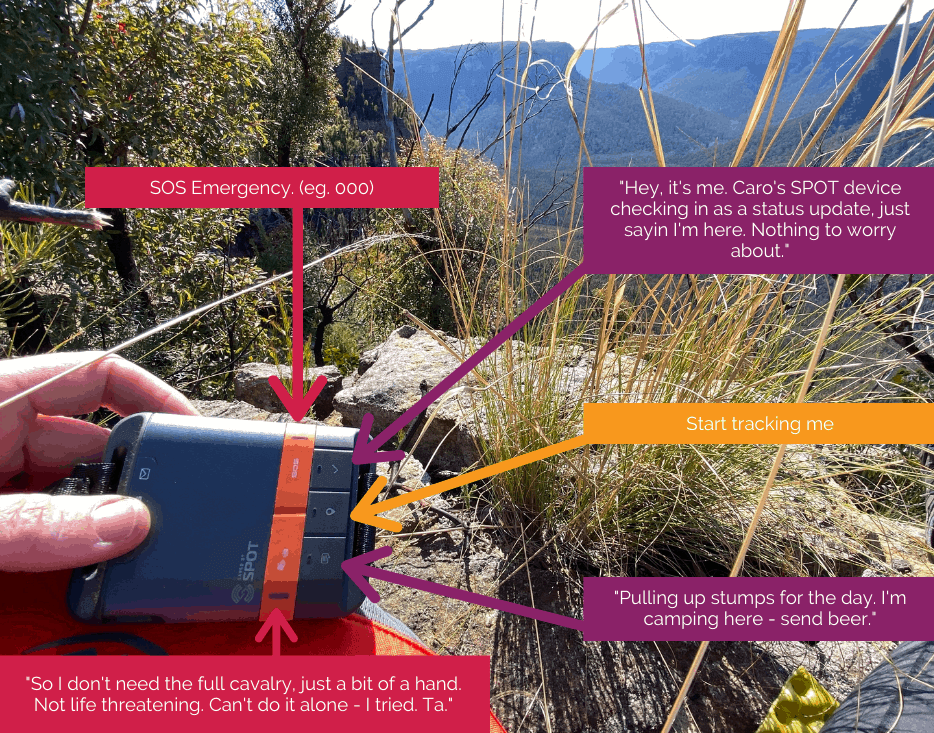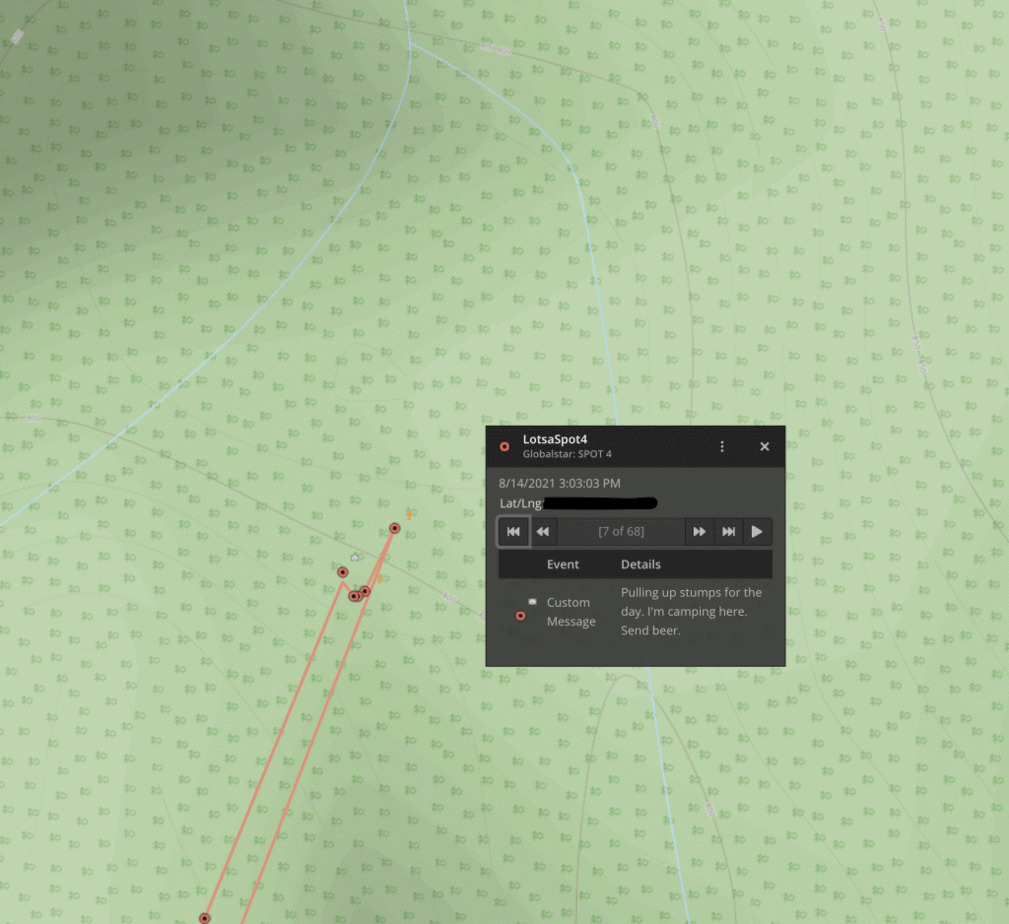…and also carry a PLB.
It’s pretty incredible the ways in which technology has changed the bush search and rescue (LandSAR) landscape in recent years. I’ve done quite a few reviews and articles that compare different satellite communication devices, such as a PLB (Personal Locator Beacon), Garmin InReach or SPOT, but when it came to my personal preference, I would always carry a PLB. All that changed a month ago when I also bought* a SPOT Gen4.
I remember when brick-like PLBs, like the (still current) GME Accusat, which slid comfortably into my backpack for many years (yes, testing the battery annually), first came onto the market. Costs were high and so it was great to be part of a bushwalking club who purchased a few that we could borrow. A PLB is kind of like raising a very long arm, way up into the atmosphere, tickling a satellite’s underbelly and causing it to send a message to AMSA with your location. I can’t tell it what the problem is or any details, just where I am and that I need emergency help.
Then things started getting smaller and lighter, with way more features included.
I upgraded my brick PLB to the teeny 116gram Ocean Signal RescueMe, which still takes pride of place in my backpack.

What’s the difference between a PLB and a SPOT or Garmin InReach?
Bang for buck, I still reckon that a PLB is not only the best value for money (one-off cost, no subscription), but it’s the simplest solution that doesn’t include any middle-man, with very low reports of failure.
In the past, I’ve carried both a SPOT for work (it’s very popular in guiding), a YellowBrick (when filming in remote Pacific Islands for clients) and a Garmin InReach. What is different about these types of satellite communication devices, is that when my very long arm extends up to the heavens to tickle the satellite, it first beams the message over to a third-party relay overseas, before forwarding (almost instantly) any emergency call for help to AMSA. These devices need a subscription on top of the initial equipment cost, but this subscription comes with added features. Yes, digital fries with that.
Wanna read up on all the nitty-gritty specs and info? Jump in here to the manufacturer’s blurb.
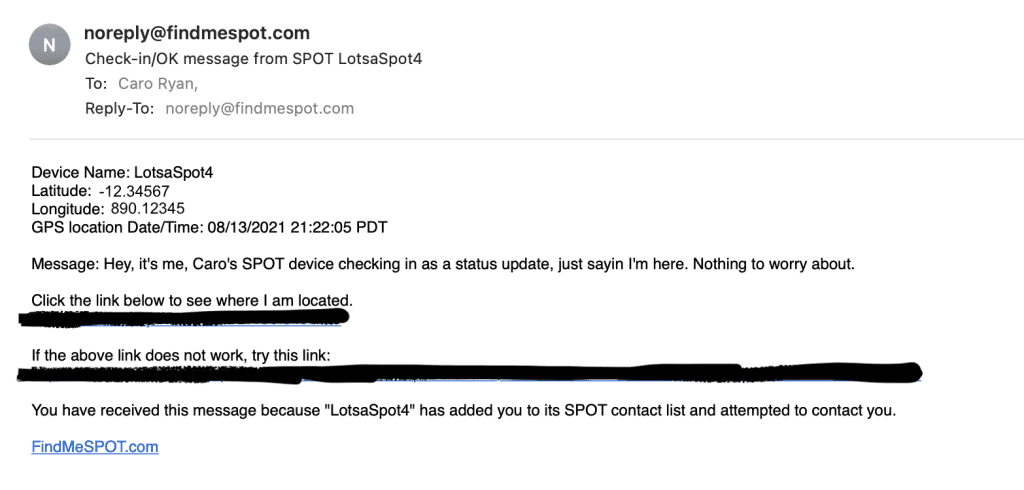
So what changed for me?
Covid
I know, I know, you’re thinking, how on earth can a global pandemic make me want to buy a SPOT 4, when I’ve been fully satisfied with a PLB up until now?
Well, a lot has changed for many of us during lockdowns and restrictions. For me, one of my biggest changes has been in terms of the ways in which I experience the bush. Up until now, this has always been in a small group, with friends or members of my bushwalking club. This touches on the whole issue of solo hiking and whilst this article isn’t about that can-of-worms, I’ve been conscious that my regular walks for exercise in my local national park have new risks, which I needed to address. There is no question that walking in a group (or at least with one other person) helps mitigate certain risks (an extra pair of hands to apply first aid, call for help, brainstorm issues, etc). If you’ve ever had to do a risk management plan, you’ll know that it’s all about identifying risks and their potential outcomes, then applying various measures to reduce the severity of those outcomes. Carrying a SPOT 4 is one way that I have chosen to help mitigate the risks associated with travelling solo into the bush.
Community
I’m very lucky to be a part of a great community. By community, I mean not only the geographic location of the Blue Mountains – a city within a World Heritage National Park – but a community of friends and acquaintances who all spend a good amount of time in the bush and have a very high level of skills in the outdoors. These are people I trust implicitly (even to keep a secret) and I know that if I ever just needed another hand (not the ‘full cavalry’ of a Police Rescue callout) I could hit them up with a SPOT ping and they’d come to help.
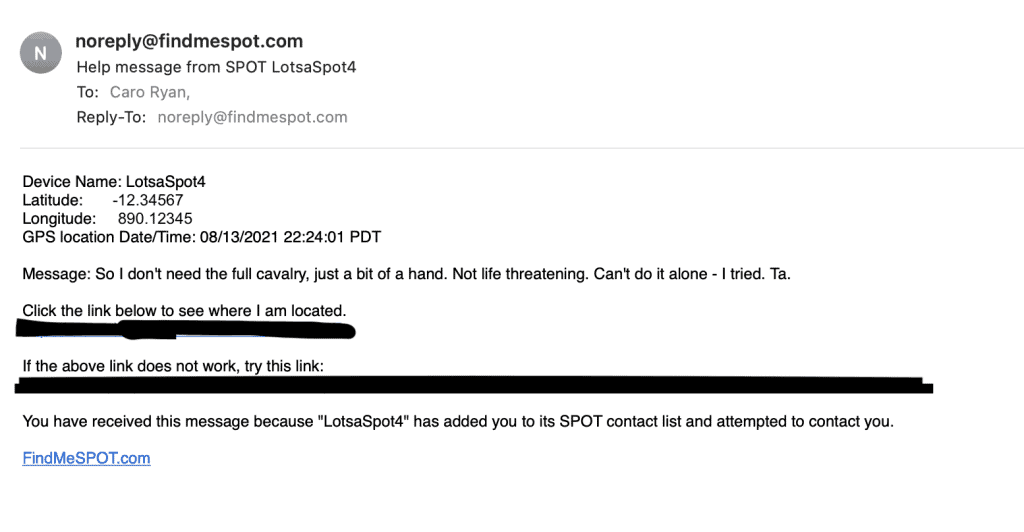
Features that made me choose SPOT4
That SPOT4 feature of ‘not the full cavalry’ (what SPOT calls ‘Help/SOV’ button) was the decider for me. Sure, I could’ve got a Garmin InReach Mini, but for me (see below!) I am reminded of the reasons I go into the bush in the first place. I go to disconnect… to reconnect. There’s something about being able to send sms messages or even Facebook messages via an InReach, that would be no different to being in full mobile coverage and contactable at all times. That’s not necessarily something that I want to do in a wild and natural environment.
In addition to the ‘not the full cavalry’ button, the other decider for me was the motion detection setting which sends an alert to my contacts if I haven’t moved for a set period of time. Chances are, I’ve just forgotten to turn the device off when I get to camp, which is why I have set the message to say, “Hey, Caro’s SPOT hasn’t moved for a while. What time is it? She might be asleep… or maybe not?” This feature links directly to my risk assessment about exploring out there solo. If I am unable to push a button for help, what are my other options?
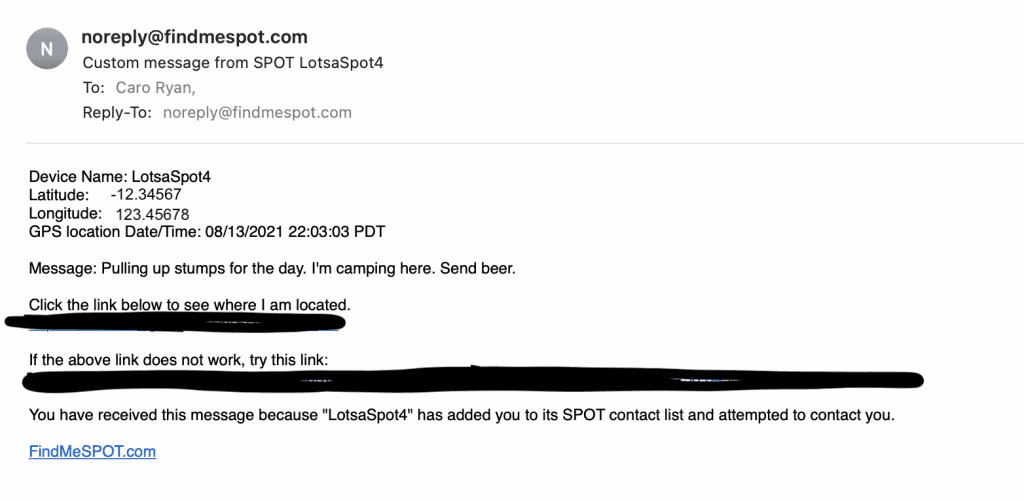
What’s the best remote communications device for you?
Well, that all depends.
Risk and risk tolerance is a very personal and subjective thing. Whilst I personally don’t want the convenience of sending an sms or two-way satellite communication on tap, for others, this could be exactly the jam you’re looking for to give you (or your loved ones) that often touted, ‘peace of mind’.
So if you’re looking to buy a satellite gadget and reading endless opinion-filled forums or gear reviews, perhaps take a moment to think not only about the logistics of price, performance pedigree and features, but the sociological aspect that introducing a new gadget will bring.
*PS: And yes… I bought the SPOT 4, it wasn’t sponsored or provided to me free of charge. However, if you choose to get one via one of the links in this article, it’s an affiliate link to Snowy’s Outdoors – a great Aussie outdoor retailer. They have great prices, you’ll pay no more, but I’ll get a small commission. Thanks!

